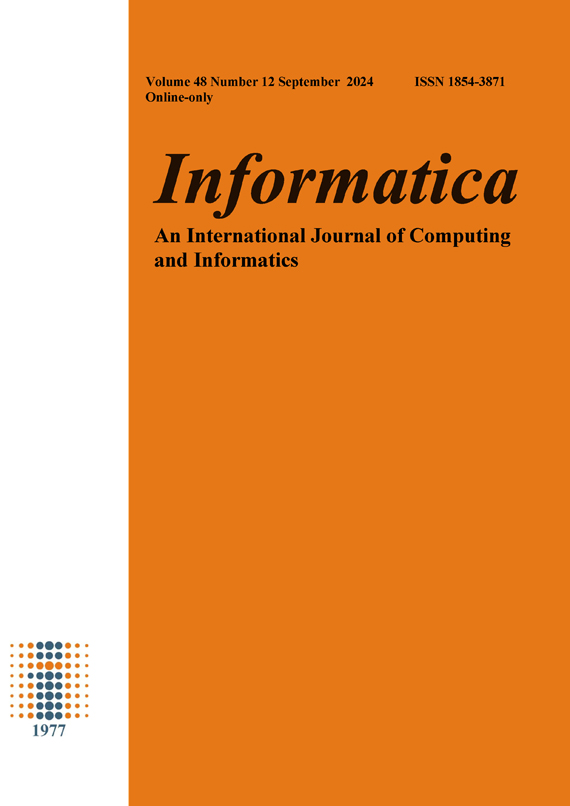Optimization of Video Stability Technology by Integrating Tiny-Res-PWNet Network Model
DOI:
https://doi.org/10.31449/inf.v48i12.6179Abstract
To achieve high-quality video stabilization, this study improves the output structure of the stabilization network and adds Fourier spectrum constraints and local motion constraints, while optimizing the affine matrix parameters. In addition, this study replaces the encoder convolutional layer with a residual module and combines feature fusion to process feature information extracted from different network layers. This can achieve optimization and lightweight processing of pixel by pixel stable network models. The results show that compared to the previous pixel by pixel stable network model, the stability evaluation index of the improved pixel by pixel stable network model has increased by about 3.7%. Compared to the pixel by pixel stable network model encoder, the parameter count of the pixel by pixel stable network model encoder fused with residual module is reduced by 12.1%, the model size is reduced by 11.7%, the floating-point operation is reduced by 13.2%, and the running frame rate is increased by 5.6%. The lightweight pixel by pixel stable network model can achieve a frame rate of 131.2 at high-performance operation, far higher than the 83.1 of the pixel by pixel stable network model. The outcomes showcase that the network model is an effective optimization method for video stabilization technology and can be applied to many real-time video processing scenarios. This helps to improve the technical level and application effectiveness in this field.
Downloads
Published
Issue
Section
License
I assign to Informatica, An International Journal of Computing and Informatics ("Journal") the copyright in the manuscript identified above and any additional material (figures, tables, illustrations, software or other information intended for publication) submitted as part of or as a supplement to the manuscript ("Paper") in all forms and media throughout the world, in all languages, for the full term of copyright, effective when and if the article is accepted for publication. This transfer includes the right to reproduce and/or to distribute the Paper to other journals or digital libraries in electronic and online forms and systems.
I understand that I retain the rights to use the pre-prints, off-prints, accepted manuscript and published journal Paper for personal use, scholarly purposes and internal institutional use.
In certain cases, I can ask for retaining the publishing rights of the Paper. The Journal can permit or deny the request for publishing rights, to which I fully agree.
I declare that the submitted Paper is original, has been written by the stated authors and has not been published elsewhere nor is currently being considered for publication by any other journal and will not be submitted for such review while under review by this Journal. The Paper contains no material that violates proprietary rights of any other person or entity. I have obtained written permission from copyright owners for any excerpts from copyrighted works that are included and have credited the sources in my article. I have informed the co-author(s) of the terms of this publishing agreement.
Copyright © Slovenian Society Informatika








